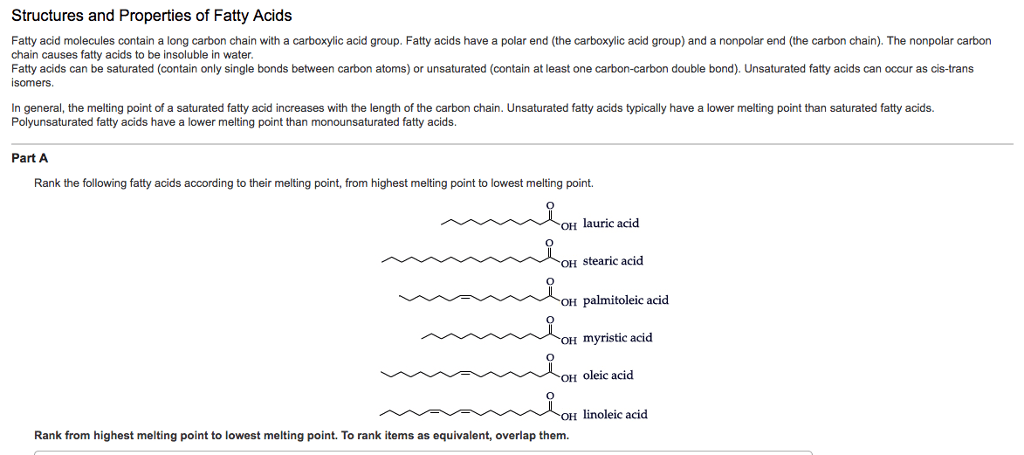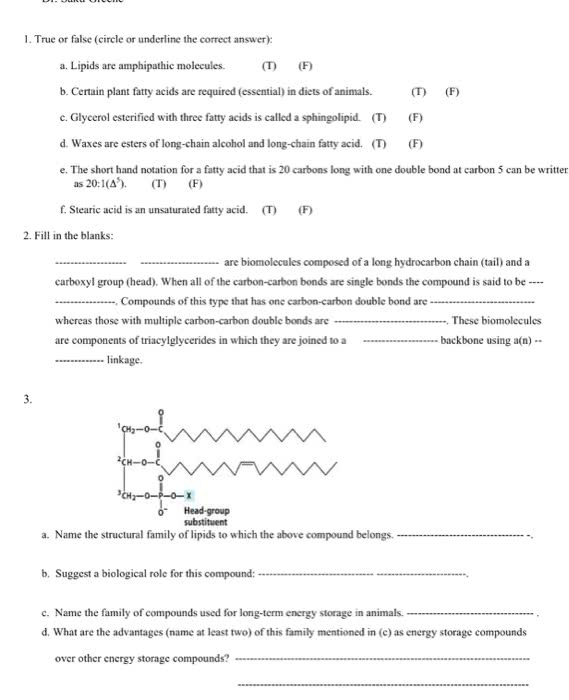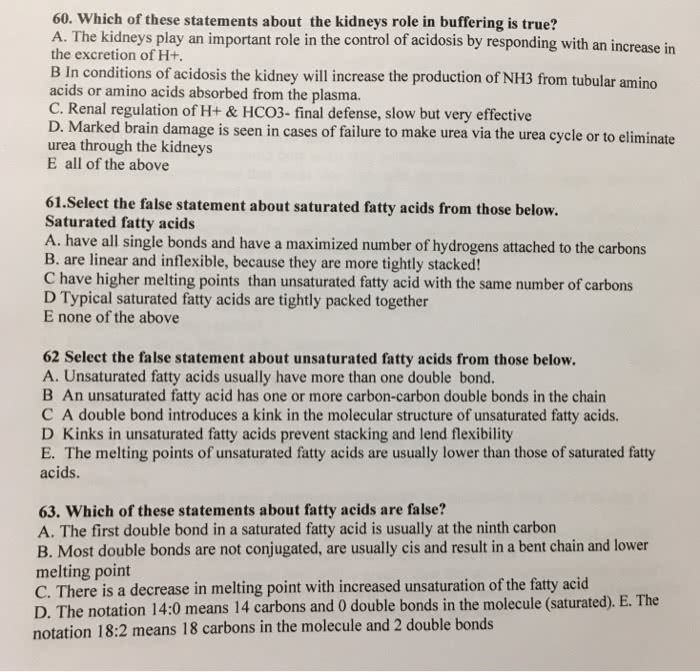CHE 211 Study Guide - Final Guide: Stereoisomerism, Trans Fat, Hydrophile

Organic Chemistry 2: Lipids
Fatty Acids
o Fatty acids are the simplest types of lipids and they contain long straight carbon chain
that is attached to carboxylic acids – no branching; even though the carboxylic acid
portion of the fatty acid is hydrophilic (loves water), the long carbon chain is
hydrophobic (hates water) thus, making fatty acids water INSOLUBLE
o Usually, fatty acids have an even number of carbons in the chain, including the carboxyl
carbon most of these fatty acid chains range from 10–20 carbons in length
o The carbon chain of a fatty acid may or may not contain carbon-carbon double bond;
Fatty acids can be saturated (all the carbon bonds are single bonds) or unsaturated
(fatty acid contains atleast one double bond), but usually no other functional groups
present
- Monounsaturated fatty acid has a carbon chain where one C=C is present
- Polyunsaturated fatty acid has a carbon chain where there are 2 or more C=C
bonds present
o Any fatty acid that cannot be synthesized by the body is called an essential fatty acid
Structure
► Stearic acid: a typical saturated fatty acid with 18 carbons in the chain
► Oleic acid: a typical unsaturated fatty acid (MONO-unsaturated) with 18 carbons
in the chain (double bond is located at carbon-9 and it is CIS configuration)
▪ Saturated fatty acids have no double bonds (contains all sigma bonds)
▪ Unsaturated fatty acids do contain double bonds (atleast one double
bond)
▪ Compounds that contain carbon=carbon double bonds can exist as a pair
of cis/trans stereoisomers this applies to fatty acids as well
▪ The double bond is normally in a cis configuration (The cis isomer tends
to predominate in naturally occurring unsaturated fatty acid)
▪ The melting point of unsaturated fatty acids tend to be lower than that
of saturated fatty acid with the same number of carbon atoms (The cis
ofiguratio does’t allo fatty aids to e paked as lose together);
the structural configuration will have a major impact on the physical
properties and uses of unsaturated fatty acid as we will see later
find more resources at oneclass.com
find more resources at oneclass.com
Document Summary
Fatty acids can be saturated (all the carbon bonds are single bonds) or unsaturated (fatty acid contains atleast one double bond), but usually no other functional groups present. Monounsaturated fatty acid has a carbon chain where one c=c is present. Polyunsaturated fatty acid has a carbon chain where there are 2 or more c=c bonds present: any fatty acid that cannot be synthesized by the body is called an essential fatty acid. Stearic acid: a typical saturated fatty acid with 18 carbons in the chain. An unsaturated fatty acid has one or more carbon-carbon double bonds in the chain. The first double bond is usually at the. The placement and geometry configuration of the double bonds are not random, they are both dictated by the enzymes that catalyze biosynthesis of unsaturated fatty acid. The double bonds are not conjugated and as usually cis; cis double bonds result in a bent chain and lower melting point.



